(800) 343-1391 • (603) 749-6434
www.aemc.com
- Mega Menu
- Products
By Industry
Other Product Lines
- Learn
- Resources
- Support
- Customer Service
- Export
- Join our Mailing List
- Legal Notices
- Literature Request
- Policies
- Private Training
- Product End-of-Life Policy
- Repair and Calibration Services
- Returns
- Safety and Recall Notices
- Software/Firmware
- Technical Support
- Terms and Conditions
- Training Seminars
- Training Webinars
- Warranty Registration
- Where To Buy
- Store
- About Us
- Contact Us
- Products
- Cable Testers
- Clamp-On Meters
- Current Probes
- Data Loggers
- Decade Boxes
- Power Supplies/Generators
- Digital Multimeters
- Electrical Test Tools
- Environmental Testers
- Ground Resistance Testers
- GroundFlex® Field Kit
- Static Ground and Bond Test System Kit
- High Voltage Testers
- Megohmmeters - Insulation Testers
- Micro-Ohmmeters
- Multi-Function Installation Testers
- Oscilloscopes
- Power Analyzers / Energy Loggers
- Tachometers
- Thermal Imaging
- Digital Transformer Turns Ratiometers
- Accessories
- Learn
- Articles
- Resources
- Support
- Where to Buy
- Store
- Company
- Contact Us
ⓘ Due to recent tariff adjustments, product prices may be affected, and some surcharges may not yet be included in the prices shown.
We’re Sharing the Burden — Absorbing 50% of Tariff Costs to Help You Save. Learn More.
ⓘ Debido a los recientes ajustes en aranceles, los precios de los productos pueden verse afectados y algunos recargos podrán no estar incluidos en los precios mostrados en nuestro sitio web.
Para ayudarle a ahorrar, estamos asumiendo el 50% del costo de los aranceles. Más información en este enlace.
- Applications
- Megohmmeters
- Classifications of Motors
Classifications of Motors
CLASS A MOTORS: Class A Motors are characterized by normal starting torque, high starting current, and low operating slip. The motors have low rotor circuit resistance and therefore operate efficiently with a low slip (0.005 < s < 0.015) at full load. These machines are suitable for applications where the load torque is low at start (such as fan or pump loads) so that full speed is achieved rapidly, thereby eliminating the problem of overheating during starting. In larger machines, low-voltage starting is required to limit the starting current.
CLASS B MOTORS: Class B Motors are characterized by normal starting torque, low starting current, and low operating slip. The starting torque is almost the same as that in classes A motor, but the starting is about 75 percent of that for class A. Designing for relatively high leakage reactance reduces the starting current by using either deep-bar rotors of double cage rotors. The high leakage reactance lowers the maximum torque. The full-load slip and efficiency are as good as those of class A motor.
Motors of this class are good general-purpose motors and have a wide variety of industrial applications. They are particularly suitable for constant-speed drives, where the demand for starting torque is not severe. Examples are drives for fans, pumps, blowers, and motor-generator sets.
CLASS C MOTORS: Class C Motors are characterized by high starting torque and low starting current. A double-cage rotor is used with higher rotor resistance than is found in class B motors. The full-load slip is somewhat higher and the efficiency lower than for class A and class B motors. Class C motors are suitable for driving compressors, conveyors, crushers, and so forth.
CLASS D MOTORS: Class D Motors are characterized by high starting torque, low starting current, and high operating slip. The rotor cage bars are made of high-resistance material such as brass instead of copper. The torque-speed characteristic is similar to that of a wound-rotor motor with some external resistance connected to the rotor circuit. The maximum torque occurs at a slip of 0.5 or higher. The full load operating slip is high (8 to 15 percent), and therefore the running efficiency is low. The high losses in the rotor circuit require that the machine be large (and hence expensive) for a given power. These motors are suitable for driving intermittent loads requiring rapid acceleration and high-impact loads such as punch presses or shears. In the case of impact loads, a flywheel is fitted to the system. As the motor speed falls appreciably with load impact, the flywheel delivers some of its kinetic energy during the impact.
| CLASSIFICATION | START TORQUE | START CURRENT | SLIP |
| A | Normal | High | Low |
| B | Normal | Low | Low |
| C | High | Low | Normal |
| D | High | Low | High |
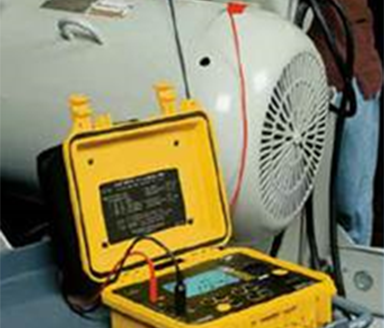
Products
-
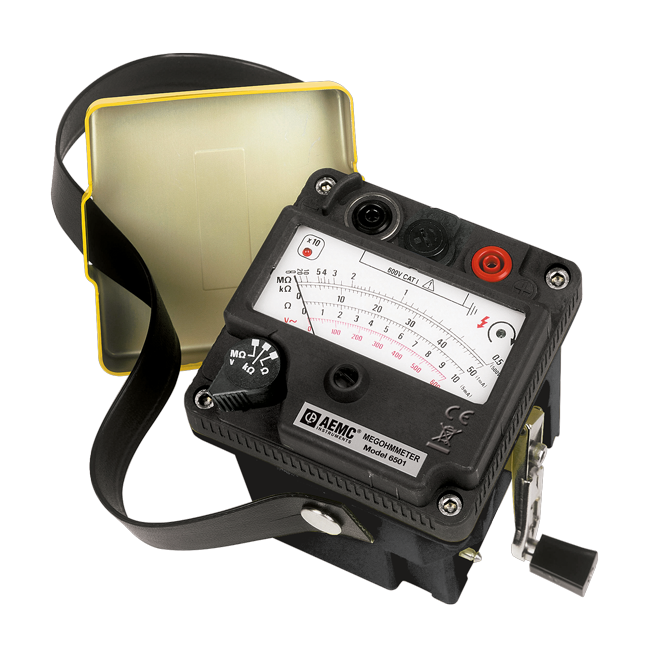
Megohmmeter Model 6501
-
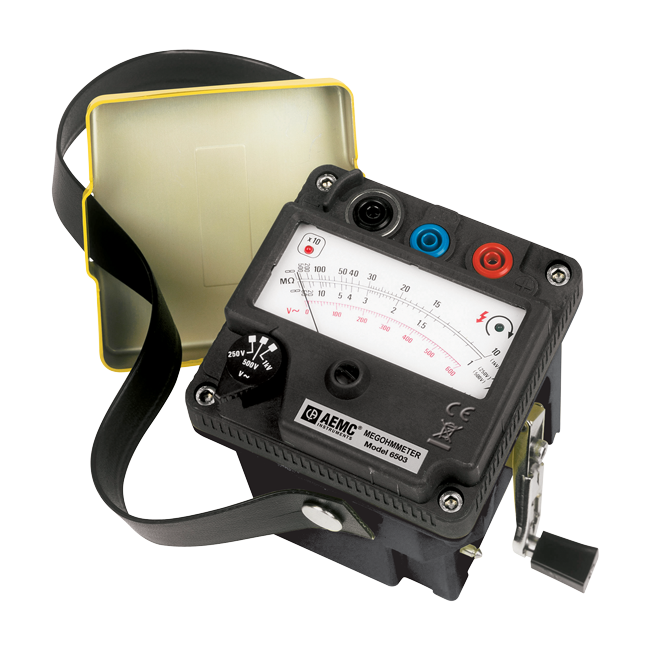
Megohmmeter Model 6503
-
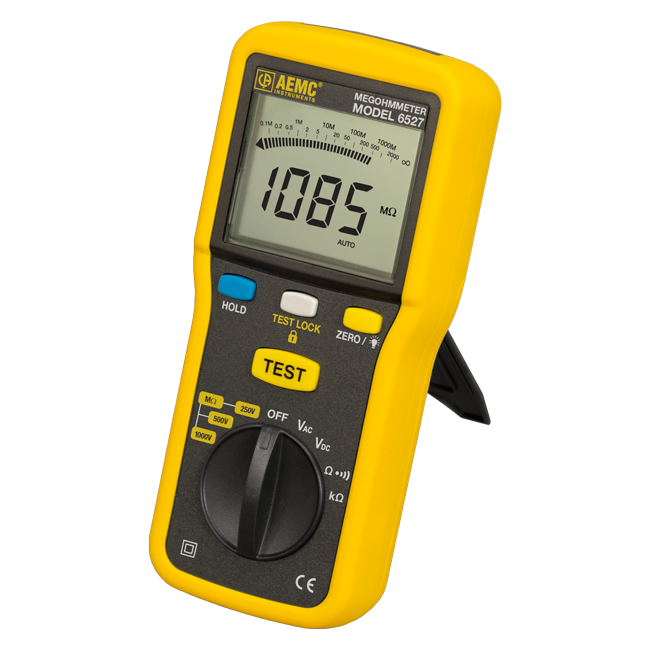
Megohmmeter Model 6527
-

Megohmmeter Model 6505
-
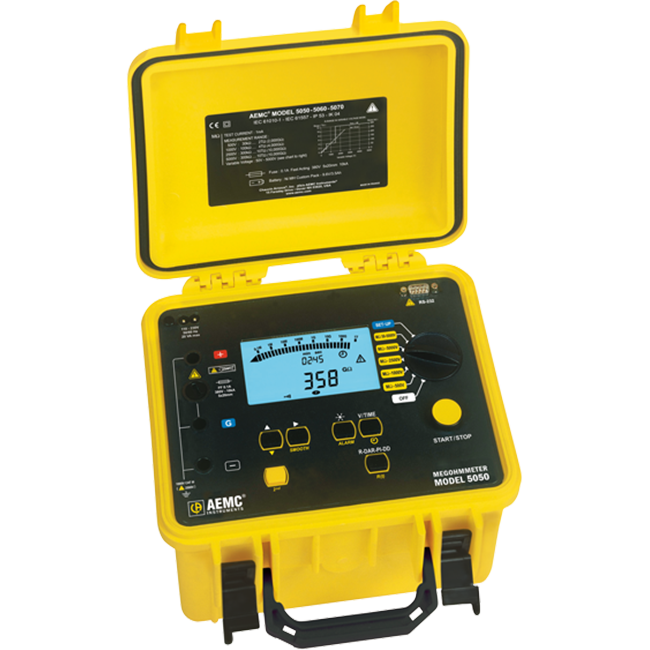
Megohmmeter Model 5050
-
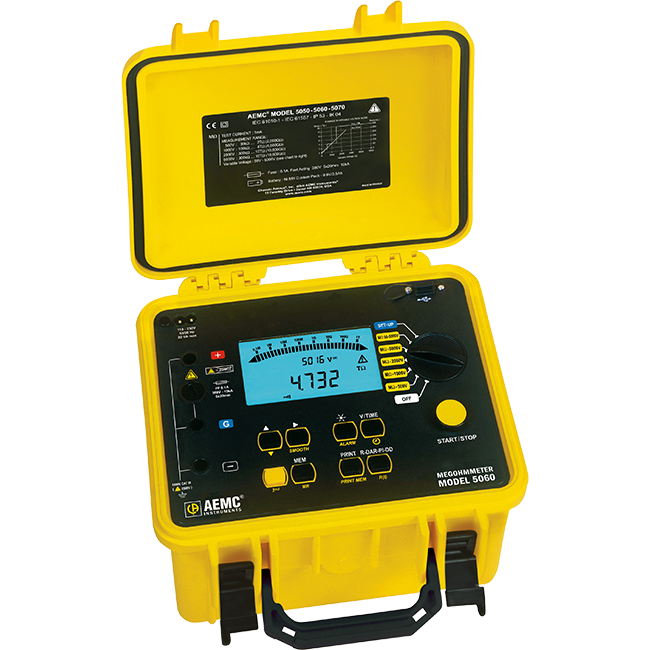
Megohmmeter Model 5060
-

Megohmmeter Model 6550
-
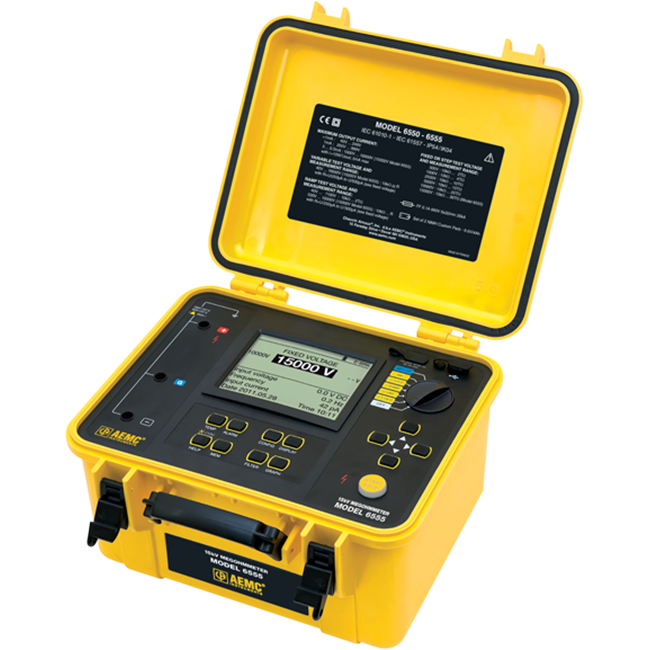
Megohmmeter Model 6555
-

Megohmmeter Model 6522
-

Megohmmeter Model 6532
-

Megohmmeter Model 6536
-

Megohmmeter Model 1060
-

Megohmmeter Model 1015
-
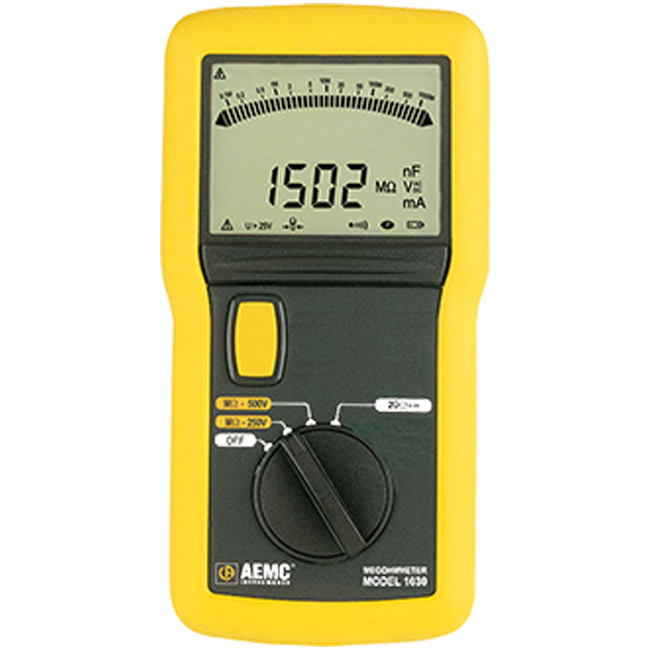
Megohmmeter Model 1030
-

Megohmmeter Model 1035
-

Megohmmeter Model 1040
-
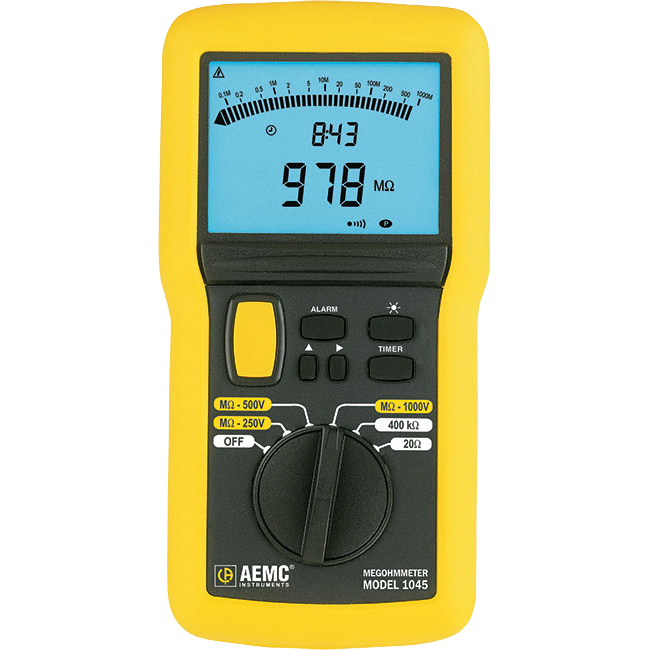
Megohmmeter Model 1045
-
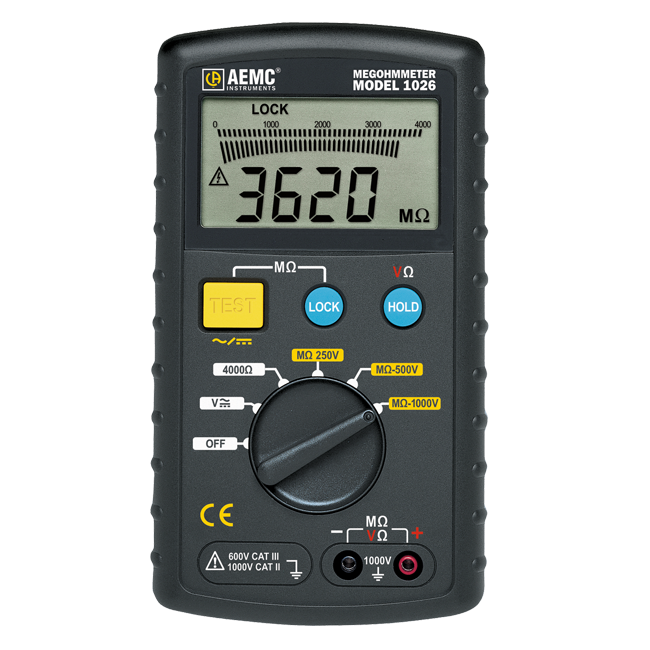
Megohmmeter Model 1026 Discontinued
-
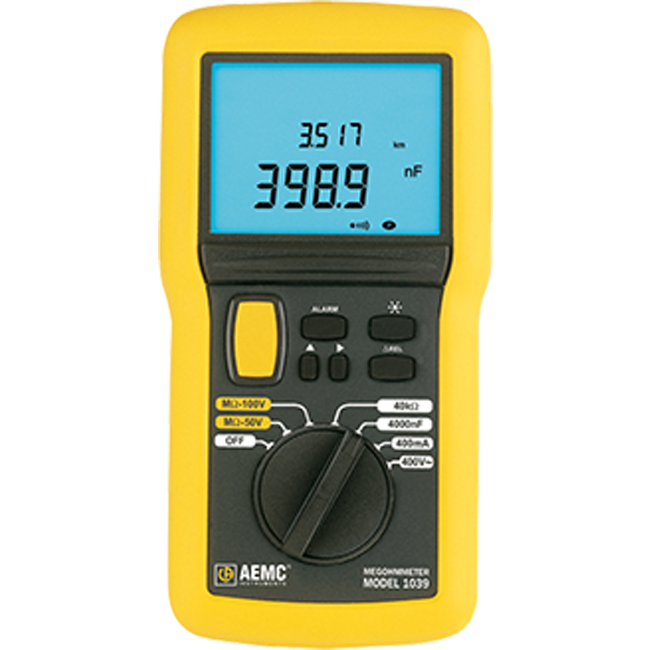
Megohmmeter Model 1039
-
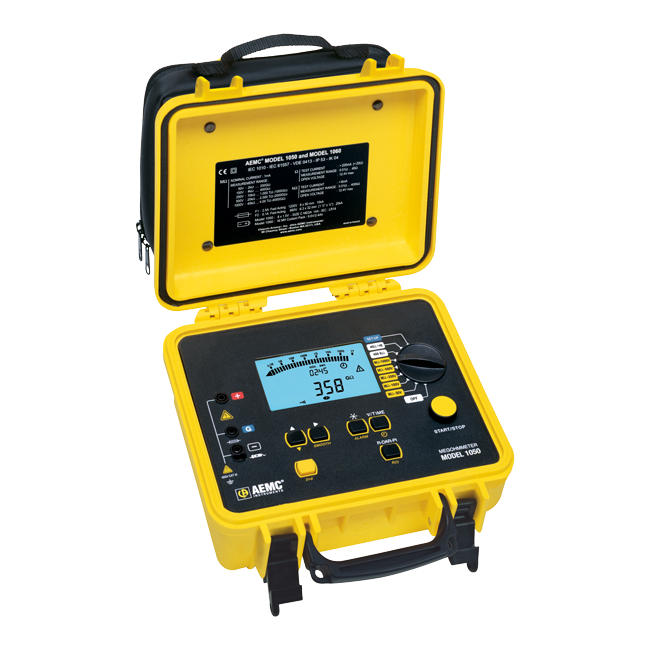
Megohmmeter Model 1050 (Discontinued. See replacement: Model 1060 Cat#2130.03)














